



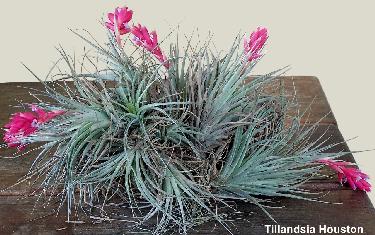

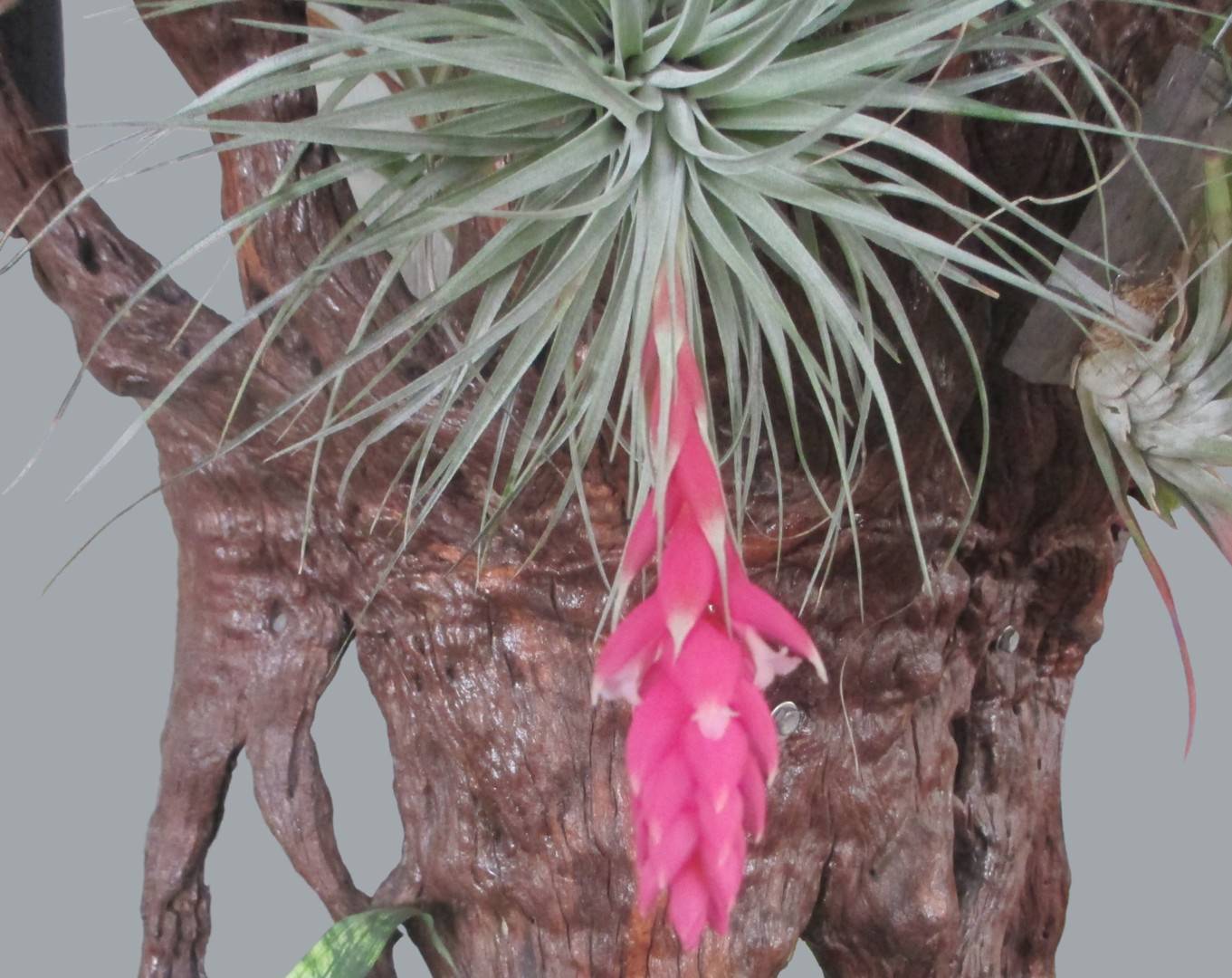
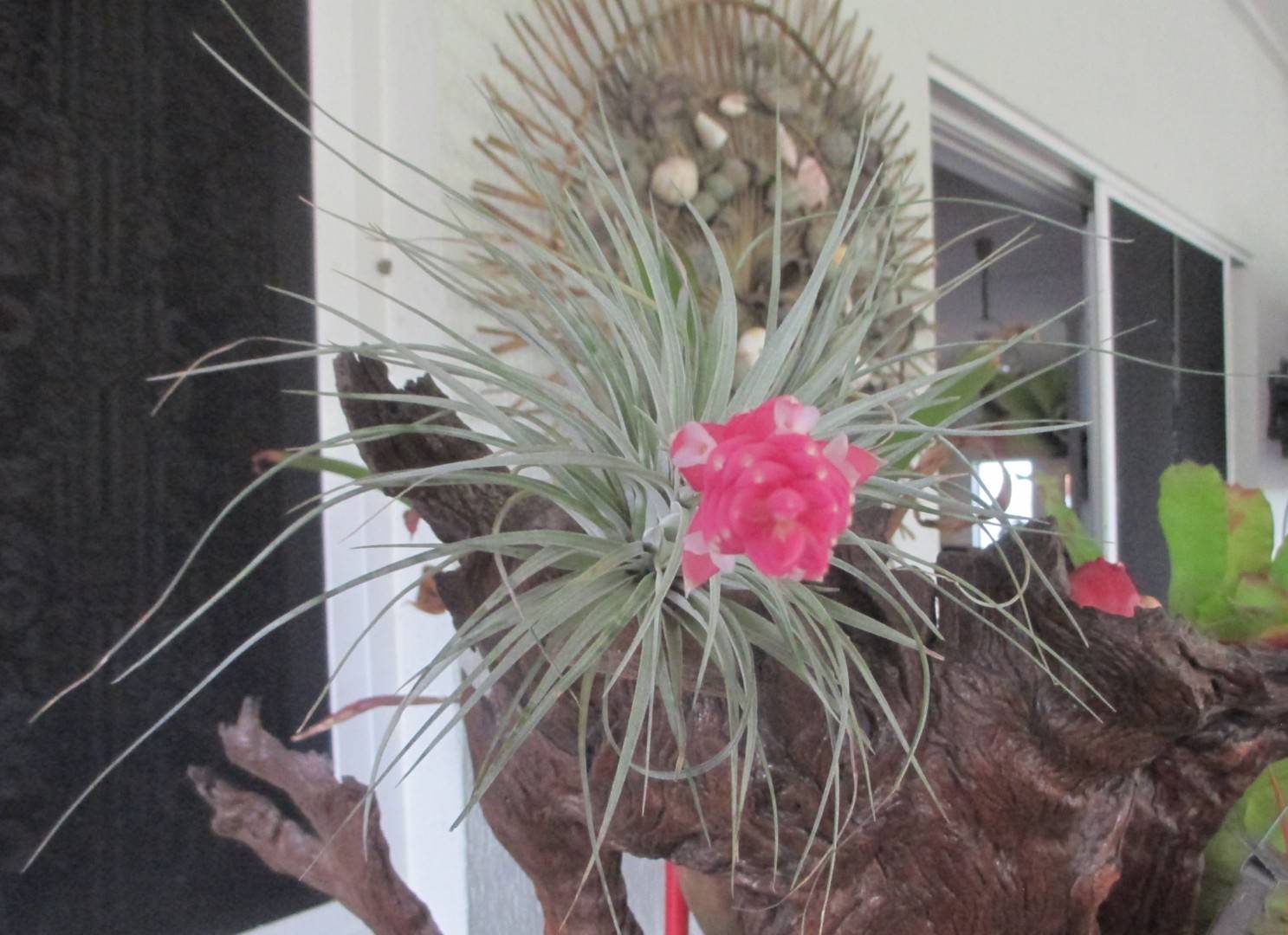
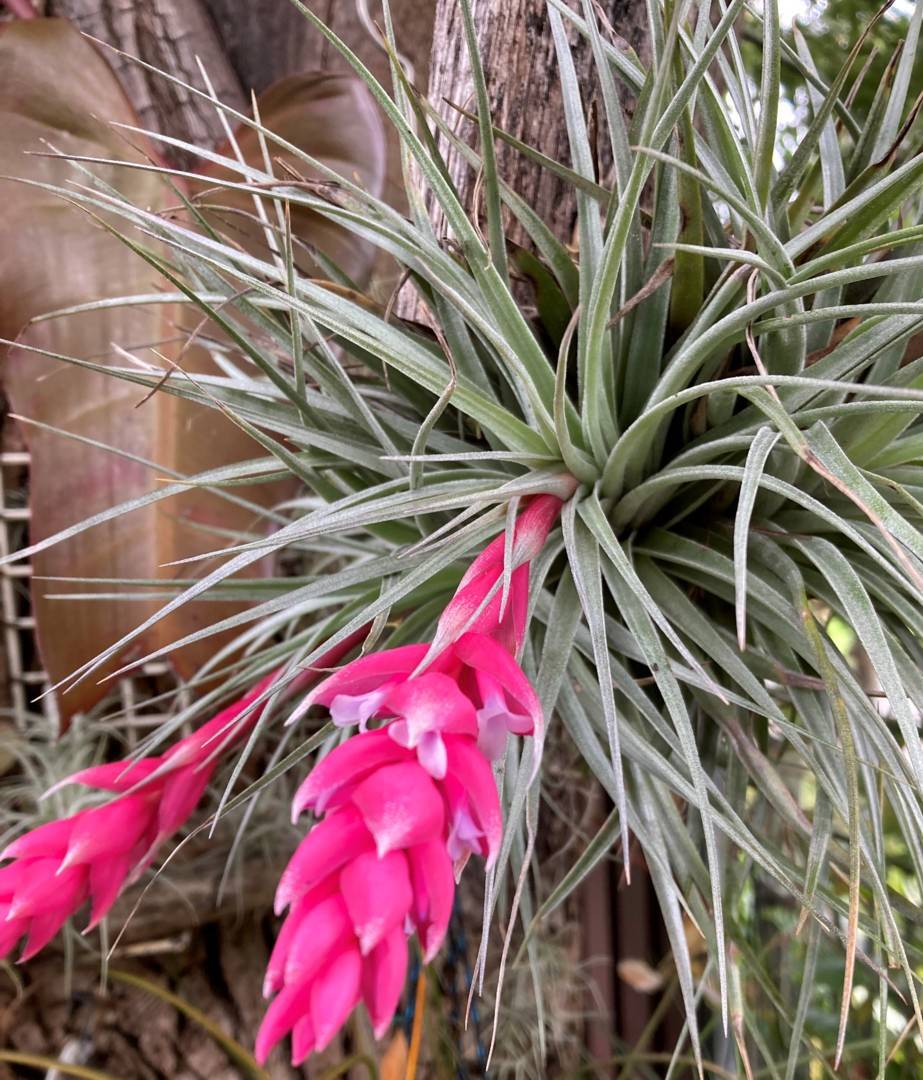
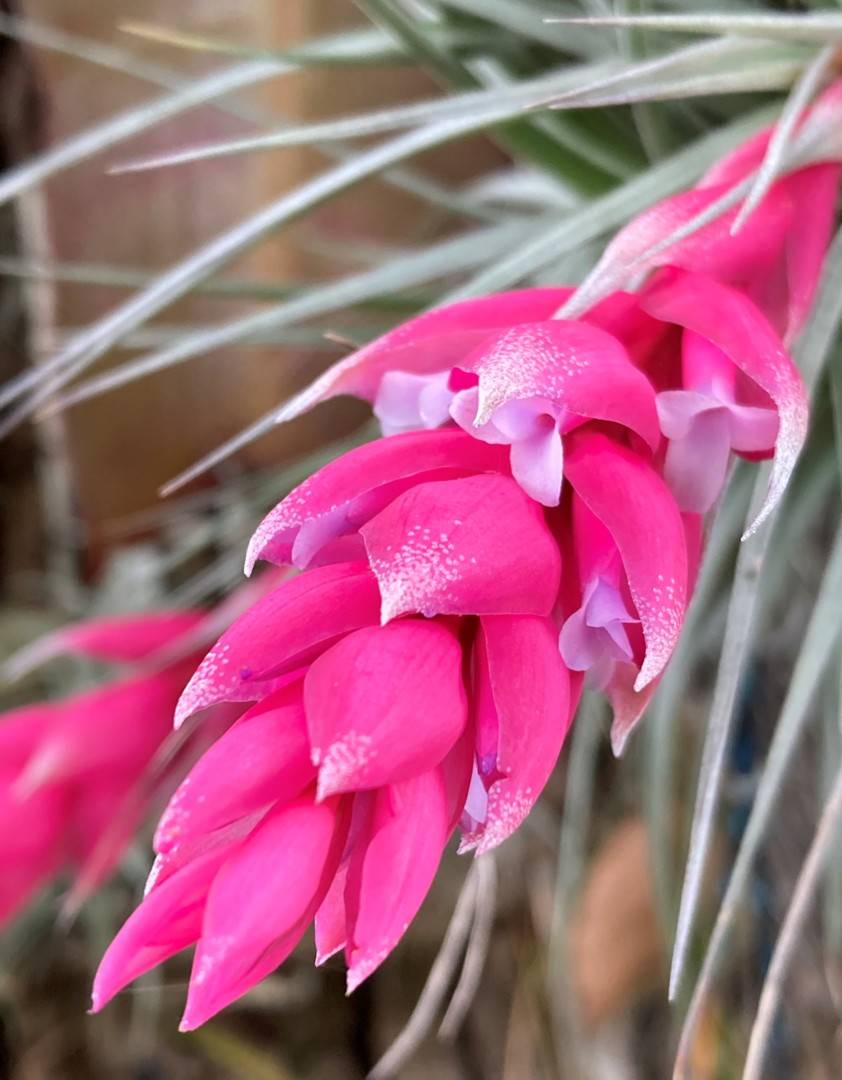
Tillandsia stricta, a native of Brazil, and T. meridionalis from Argentina are loosely related species. The most notable differences are that the latter has stiffer, more lepidote leaves and its flowers are white instead of blue. I crossed the two in 1982 and flowered the first hybrids in 1986.
Tillandsia x Houston (grex) (T. stricta x meridionalis) (and reciprocal)
Plant acaulescent, a dense, spreading rosette to 27 cm in diameter. Vegetative reproduction by basal offsets after flowering. Leaves up to 140 in number, many more than either parent, narrow-triangular, erect-spreading or arching in different clones, fairly stiff but less so than those of T. meridionalis; leaf blades to 16 cm long, 13 mm wide near base, usually medium green but some clones whitish-lepidote. Most clones conspicuously lepidote only on lower surfaces of leaves. Inflorescence usually arching to nodding (straight in a few clones), simple, dense, 15 to 20 cm long. Most clones flower for three to four weeks between December and February. Scape about equaling leaves. Spike 6-9 cm long, 3-5 cm wide, dense, polystichous. Floral bracts 25-30 mm long, 15 -20 mm wide, loosely imbricate, pale pink to deep rose-red, often lepidote at tips. Flowers broadly funnelform, 7-11 mm in diameter, near white to pale blue. Flowers fertile.
This hybrid grex differs from its parent species mainly in size, being much larger, leafier, and bearing much larger spikes. It is intermediate between the two parents in other characters. Because of its size and vigor, it was named in recognition of the very large and active Houston Bromeliad Society.
The best one of the 40 or so plants to flower the first year has been named 'Flaming Spire'. Its long spikes are stiff and straight, and the floral bracts are deep rose-red, almost crimson; the flowers are pale blue. The leaves are more lepidote than those of most clones and are a whitish color.
Tillandsia stricta is an extremely vigorous species; it flowers in only 3½ years from seed, whereas most other species take at least five years to mature. It usually imparts this vigor to its hybrids, making it an excellent parent. Several more T. stricta hybrids will be published here in the near future.
Tillandsia X Houston is quite fertile; F2 sibling crosses and backcrosses are growing vigorously.
! Ed. - take note of the discussions under T. Cotton Candy.